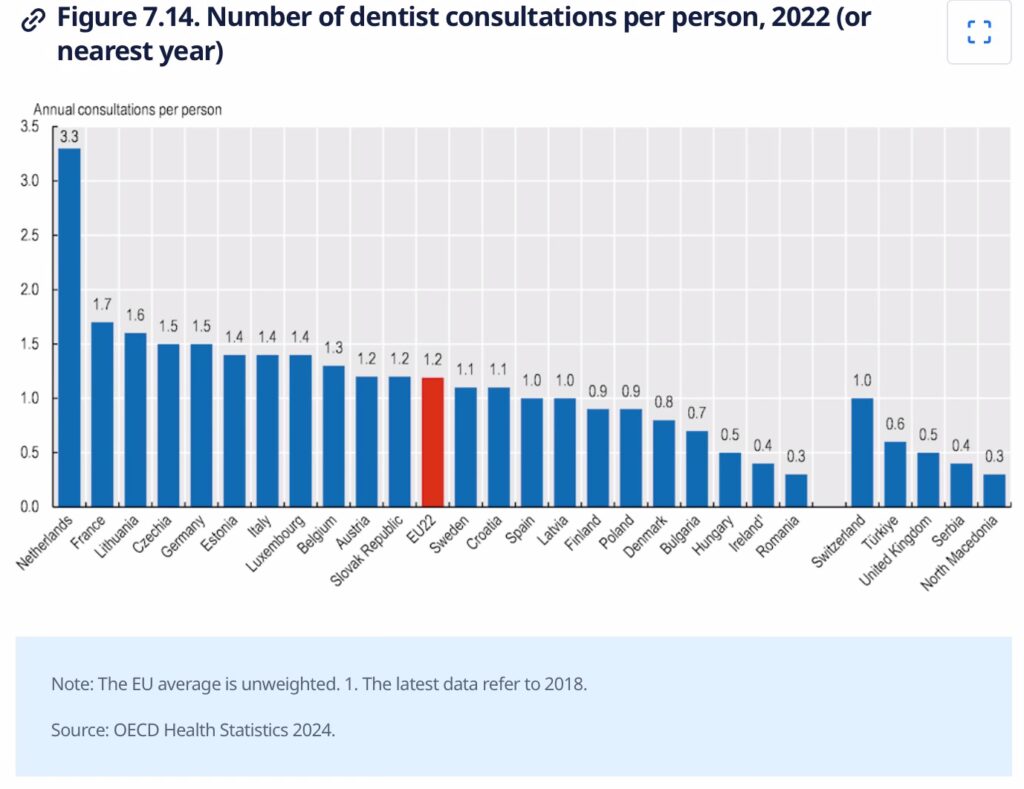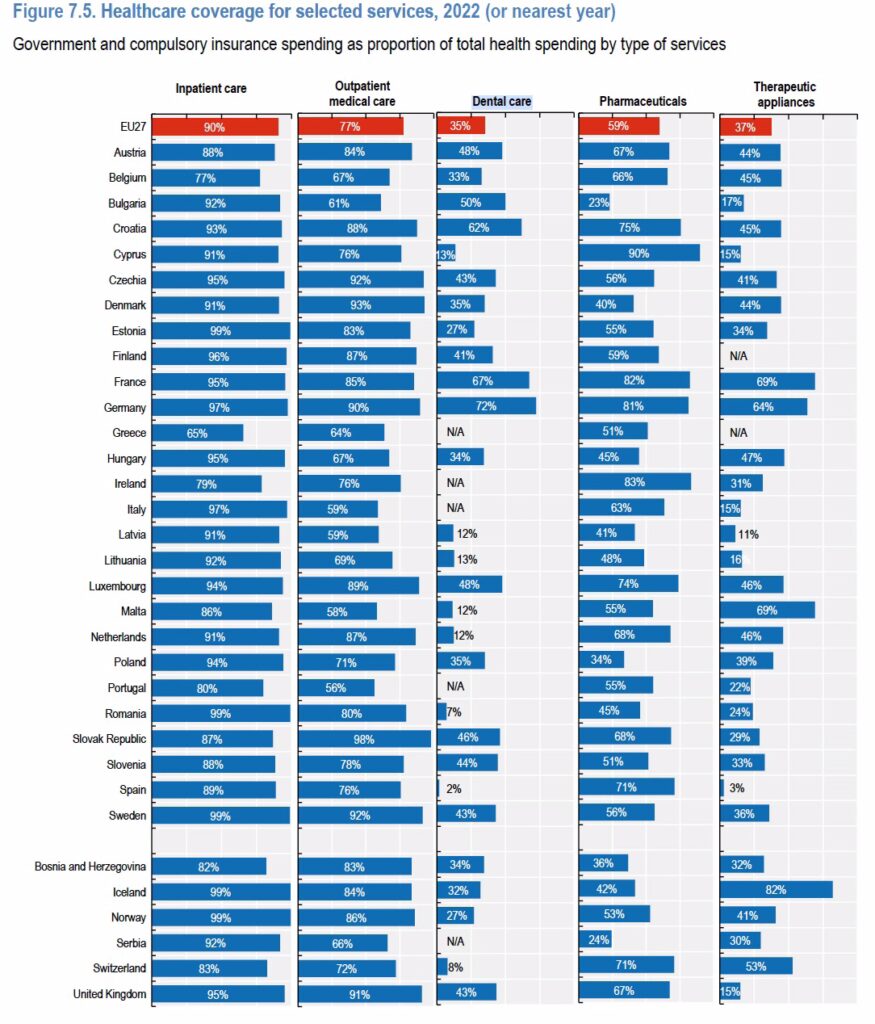From the 2024 edition of the EU-OECD publication ‘Health at a glance’ 4 important information can be reported :
1-6% of people who needed dental care reported some unmet needs because of affordability or accessibility issues according to the survey.
But this proportion reached over 12% among people at risk of poverty. Over years this inequality has slightly increased. FEDCAR comes back to it in its manifesto.
Dental care accounts for over one-third of primary healthcare spending on average across the EU. “Top spenders include Estonia and Lithuania where spending on dental care represents 10% of the overall health budget. This share is significantly smaller in the Netherlands and Spain (3%)”.
Recall : in 2021 4.4% of EU children did not have proper dental care.
2-On average across EU countries a person had 1.2 consultations with a dentist in 2022.
“This ranges from 0.3 in Romania to 3.3 consultations in the Netherlands” (see the first table below).
Public funding of preventive oral healthcare services is the main criterion for explaining such a variety.
“In Romania for example, only 7% of dental care spending is publicly funded. By contrast, in France and Germany, more than 65% of dental spending is publicly covered. In the Netherlands, while dental care is not comprehensively covered in the benefit package for adults, voluntary health insurance plays an important role in covering dental care costs”.
3-Gerodontics will be pivotal in the organization of national long-term care systems by 2050.
« Europe is facing a profound demographic shift, with the proportion of people over age 65 in the EU projected to rise from 21% in 2023 to 29% by 2050 ».
4-Coverage for dental care costs is limited across EU countries.
Many countries restrict benefits to specific treatments or age groups, and many services require either substantial cost-sharing or are fully paid out-of-pocket by patients.
More than 60% of dental spending is covered in only three EU countries: Croatia, Germany and France. In Romania and Spain, the level of public coverage is very low (see the second table below).
Voluntary health insurance is common for dental care, including in Germany, France, the Netherlands and Portugal, providing either full coverage of some services or coverage of cost-sharing obligations.


